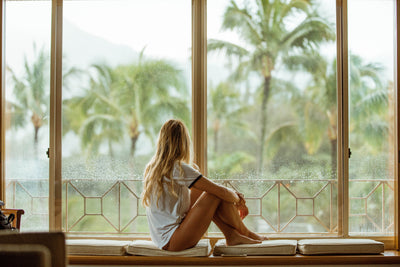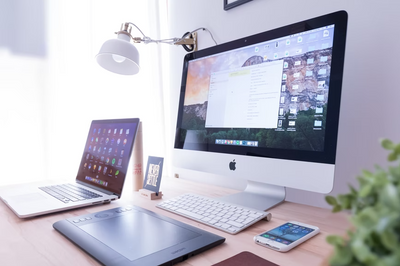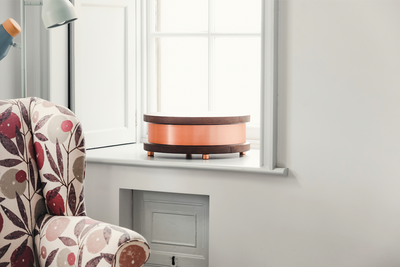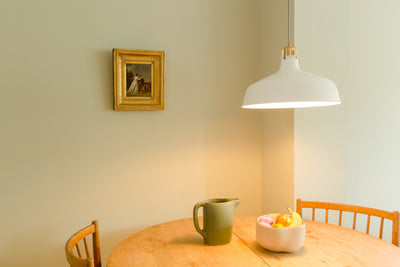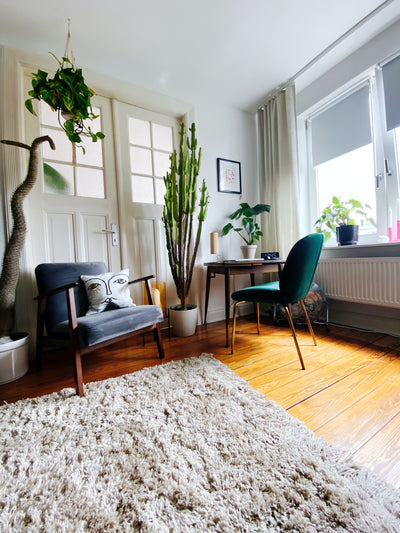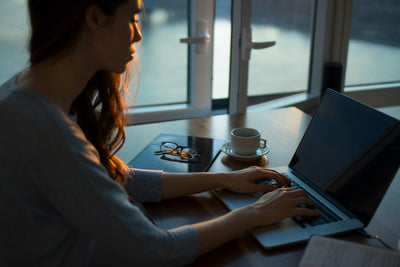The Parent’s Guide to Reducing Screen Time (and what to do with your kids instead)

With regular household routines around the world turned upside down by Covid-19, children's screen time has skyrocketed.
Speaking on BBC Radio 4’s 'You and Yours' show, child behaviour expert Elizabeth O’Shea stressed that, even in unprecedented scenarios, we should keep in mind that “children get much more anxious, angry and irritable when they’re on screens for a long time”.
Not only an irritant, too much screen-gazing has also been shown to lead to attention problems, developmental delays and sleep disorders.
Preserving offline experiences can “help families connect emotionally” and “process difficult experiences,” says (1) Developmental Behavioral Pediatrician Jenny Radesky, encouraging parents to “find offline activities that help your family calm down and communicate”.
From how to create daily structure, to which screen time rules to enforce and ideas for inventive ways to play, we hope you find the following practical tips and advice helpful:
Don’t worry about one-size-fits-all ‘limits’
In the first ever screen-time guidance (2) published in the UK last year, the Royal College of Pediatrics and Child Health (RCPCH) rejected the idea of setting specific, universal limits for children’s overall screen time.
Instead, the RCPCH suggested that parents regulate their child’s use of screens based on their individual needs and developmental age.
Conscious Spaces Founder Tara agrees with a child-by-child approach, saying “one-size-fits-all limits can be arbitrary. Every child is an individual, and what works for one won’t necessarily work for another”.
“You know your own child and what they can cope with,” Tara says. “Really, it’s about educating your children and teaching them what’s healthy and what’s not. It’s about empowering them to eventually be able to make the right decision of their own accord.”
Rather than focusing on all-encompassing limits, try instead to think about the extent to which screen time is taking the place of other, much more valuable, childhood experiences, such as family time, play, face-to-face interaction and sleep, and use that as your guide to introduce some appropriate thresholds that help restore a healthy balance.
“Screen based activity is simply no substitute for in-person contact or play”, says Tara. “And it should absolutely never be allowed to interfere with sleep – that is non-negotiable in our household.”

Lead by example
Often, children learn more from example than instruction. If you’re asking your child to use screens responsibly, try to practise what you preach, says (3) Dr Max Davie, Officer for Health Improvement at the Royal College of Paediatrics and Child Health:
“Think about your own media use, as it is important that everyone, including the adults in the home, adhere to these agreed boundaries. For instance, if you’ve decided as a family that you won’t have any screens at the dinner table, you all have to abide by that.”
Researchers found (4) that parents who are absorbed by their mobile devices tend to have “less parent-child interaction, more conflict with kids and encounter more difficult child behaviours over time”, lending screen-free family time even greater importance.
To start with, it could be about trying to allocate time and space for the different areas of your life so that they don’t spill over into one another. If possible, make a rule of leaving your computer and phone in your office (a home office still counts!) – or in a separate room from where you spend the majority of your family time.

Regain control over screens and create structure
When trying to reduce the amount of time your child spends around screens, it’s important to remember that you are not powerless. Try these simple tips to build boundaries around how, when and what your child sees online:
- Children crave leadership from their parents, so have a plan and do your best to stick to it. Whilst rigid cut-offs may not always work (again, it depends on the child), healthy structure is the key to screen time management.
- Sit down together to create a written family screen time ‘contract’ which everyone can refer back to. This could include helpful written statements like ‘our family does not use devices when we have: meals together, family gatherings, friends visiting’, or ‘on school nights, children should turn their screens off by 6pm’.
- To protect them from inappropriate material, don’t let younger family members surf the web unsupervised. Be aware of older children’s usage, but aim not to be judgmental or overly intrusive. Try to have a conversation with them, so that openness and respect is given from both sides.
- Enforce turning screens off at least one hour (preferably two) before bedtime to safeguard your children’s sleep.
- Children naturally want what their friends have. Try to stand your ground, and wait as long as you possibly can before you allow your child to get their own mobile phone or wireless device.

Encourage learning through experiences
Banning screen time before the age of 12, Steiner schools (5) prioritise experiential learning, artistic activity and the development of the imagination – and they’re increasingly popular with Silicon Valley executives (6) and their UK counterparts.
Kevin Avison, executive officer of the Steiner Schools Fellowship in the UK, revealed that, when he was teaching near Reading, “nearly 50% of parents of children in the class worked at hi-tech computer companies”.
Concerned that screens stop children discovering the world with their senses, Pierre Laurent, a former Microsoft marketing manager, now sends all of his three children to Steiner school.
“We saw that Waldorf teenagers had a different way of approaching adults and were very interested in the world,” explains Laurent. “We decided that there’s no harm in not exposing children to screens until they’re big enough. It can only be beneficial. Young children like stories, to play with things, sing, make things, build and be in nature.”
Research suggests (7) that today’s video-immersed children struggle to form original pictures in their mind or develop an “imaginative representation”. Could encouraging children to learn through their interaction with the world around them be part of the solution to this modern crisis of imagination?
New guidance (8) by the RCPCH certainly thinks so. “For children to develop the skills to cope with the world, they need regular physical play and interaction”, the advice reads, adding: “this is especially true for young children”.
To improve on this at home, try to turn down time into quality time. Have a walk in your garden, looking for different flowers or spotting places where fairies might live. Read stories or poems aloud with your child, or sing songs together, to help them develop their language skills.
Getting lost in imaginary lands has perhaps never been more relevant than it is now, with the coronavirus lockdown leaving options for real-life outings severely limited. Joanne Harris, author of Chocolat, articulated this glorious escapism perfectly in a recent tweet, (9) saying: “Where to go during #Lockdown: Narnia, Asgard, The Hundred Acre Wood, Middle-Earth, London Below, Hogwarts, Mars, Gormenghast, Lensquenet-sous-Tannes, A galaxy far, far away.”
Never mind the children - we can already feel our own worries lifting at the thought of this!
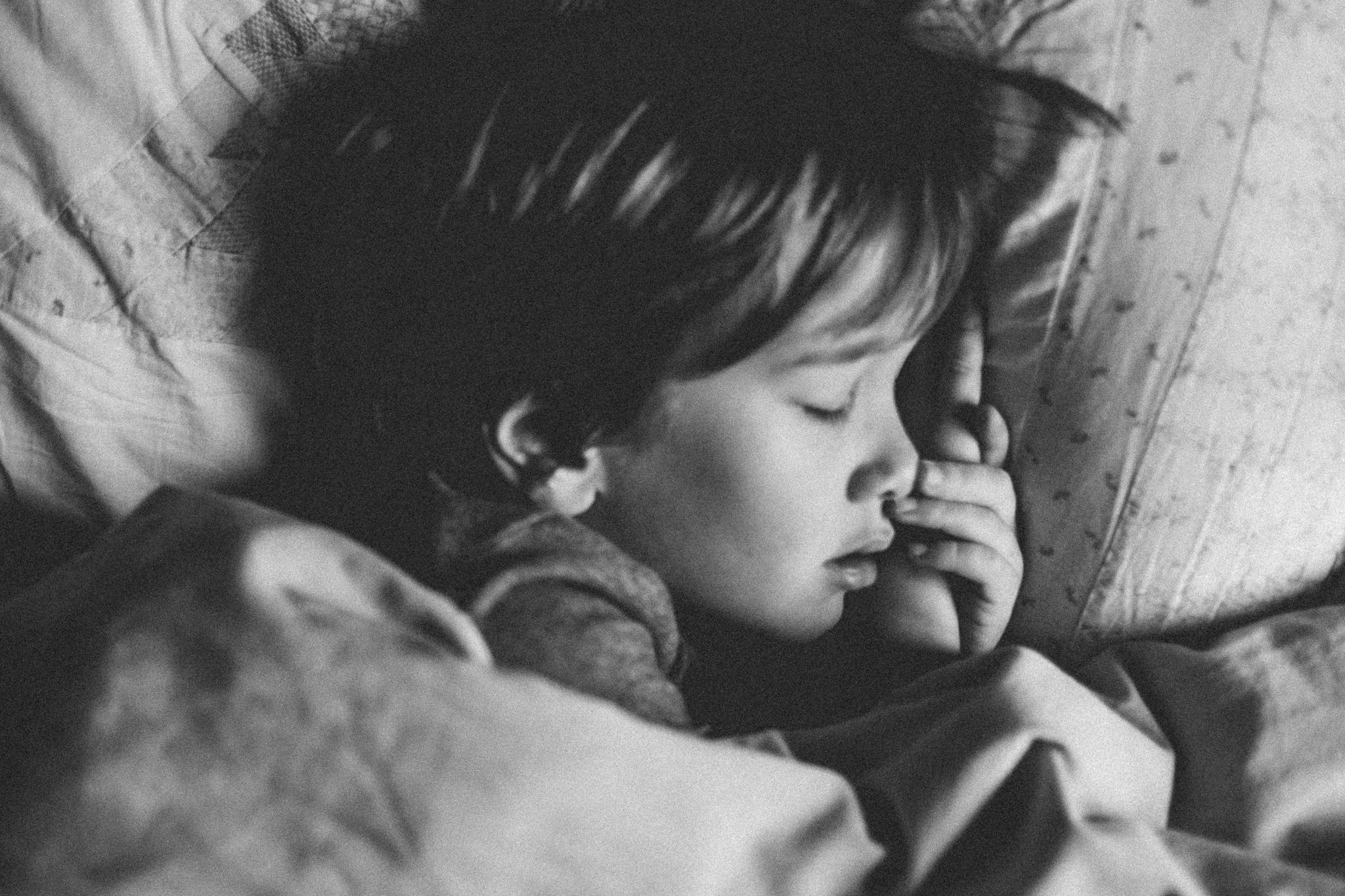
Safeguard your child’s sleep
As explained in our last article, the blue light emitted from digital devices disrupts natural melatonin production, which disrupts and prevents sleep and impacts on immunity.
With 57% of children (10) now sleeping with their mobile phone beside their pillow, and sleep disorders rising sharply in the UK, a solution is urgently needed.
Experts advise that, in order for children’s brains to wind down without stimulation from blue light (and the content being viewed), they should not be exposed to screens for at least an hour - ideally two - before bed.
You could also try protective products, such as Ocushield screen shields. Ocushield screen protectors make the perfect tool to manage your child’s blue light exposure, help balance their natural body clock and guard their precious sleep.
Do as the sleep experts do and install calming, red-toned lights, such as SaunaSpace incandescent red bulbs, in your house. The Photon red-filtered incandescent light therapy lamp, also by SaunaSpace, provides the full spectrum of healing and detoxing light waves – helping to alleviate insomnia in the process.

Get Creative
Off-screen activities that involve interaction encourage children to use their imaginations and improve essential developmental skills.
Here’s some of our favourite ways to get creative with kids at home - without a single screen in sight:
- Make a mood & vision board. Get your little ones to think about their aspirations and dreams. What inspires them and empowers them? Cut and stick images from old magazines that represent their hopes and ambitions.
- Spark engineering inspiration by finding something intriguing that you no longer need (it could be an old piece of simple electrical equipment, or an object powered by a basic mechanism) and, within a safe environment, show them how to take it apart and put it back together again.
- Rustle up your own bird feed together and keep a log identifying the different species that pay your garden a visit.
- Give them a job! Having a daily task to carry out empowers children and gives them a sense of achievement, which in turn helps to boost self-esteem. It could be anything from opening the blinds each morning to feeding the fish - or even helping you to clean the house with their own DIY spray bottle and cloth.
- Get crafty in the kitchen! If you've ever wondered how to whip up some frobscottle, Completely Revolting Recipes (11) features recipes from Roald Dahl's most-loved stories - including The Twits and Matilda.
- Try an at-home science experiment. An always popular yet simple one is to mix bicarbonate of soda, vinegar and food dye to make your own volcano.
- Get your children to create a garden obstacle course or a family kitchen disco, where you each get to pick the music.
- Build a hidden den and read a story inside by torchlight.
- Let them take the lead with child-led role play. “Sometimes”, Tara says, “when they’re seemingly at their most bored, that’s when children come up with the most magical things”.
References
(1) https://twitter.com/jennyradesky/status/1239957606225137666
(2) https://www.rcpch.ac.uk/sites/default/files/2018-12/rcpch_screen_time_guide_-_final.pdf
(3) https://www.theguardian.com/lifeandstyle/2020/mar/01/how-to-manage-your-familys-screen-time
(4) https://uk.reuters.com/article/us-health-parents-screentime/parents-need-screen-time-limits-too-pediatricians-say-idUKKCN1LF21Z
(5) https://www.steinerwaldorf.org/steiner-education/what-is-steiner-education/
(6) https://www.theguardian.com/technology/2015/may/23/screen-time-v-play-time-what-tech-leaders-wont-let-their-own-kids-do
(7) https://files.eric.ed.gov/fulltext/ED445803.pdf
(8) https://www.rcpch.ac.uk/sites/default/files/2018-12/rcpch_screen_time_guide_-_final.pdf
(9) https://twitter.com/Joannechocolat/status/1238034141591080970
(10) https://www.bbc.co.uk/news/education-51296197
(11) https://www.amazon.co.uk/Roald-Dahls-Completely-Revolting-Recipes/dp/0224083422




